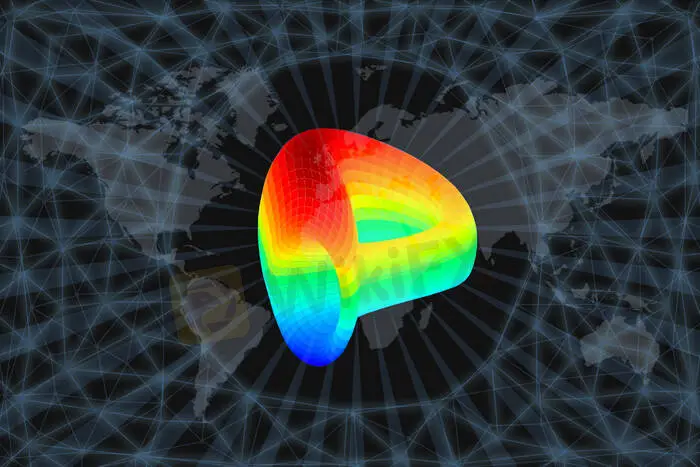简体中文
繁體中文
English
Pусский
日本語
ภาษาไทย
Tiếng Việt
Bahasa Indonesia
Español
हिन्दी
Filippiiniläinen
Français
Deutsch
Português
Türkçe
한국어
العربية
Can Curves, veToken Model Be the Future of Defi Token Design?
Abstract:The ve-token model by Curve, is advocated as a model that can be beneficial for protocols in the DeFi space, but what difference can it make?

The year 2021 has been a stellar time for the larger cryptocurrency market, with top coins like Bitcoin and Ethereum making new price all-time highs. That said, the global crypto market cap also continued to explode parabolically as most altcoin ecosystems saw decent growth. However, 2020s star performers which were DeFi tokens, mostly underperformed relative to the larger market.
Over the last couple of years, DeFi protocols have generated millions in revenue and seen a staggering rise in the use and adoption of their products. However, it has been a bumpy ride in the last year as skepticism around the tokenomics of certain protocols rose. This also gave rise to better models such as veToken model that could shape the future of DeFi token design.
Flaws in the Tokenomics
Many market experts are of the opinion that the early models of DeFi token design were pretty flawed and gave rise to massive value destruction at the cost of retail investors. While most protocols used the idea of valueless governance tokens to rise to prominence in 2020, the model had some issues. As per the model, token holders strictly have governance rights, but that wasnt true in every case.
DeFi giants like Uniswap and Compound for instance used the aforementioned model to fuel their growth and the same aided a huge rise in TVL for the tokens. However, COMP and UNI are ‘valueless’ governance tokens since there is no direct economic benefit, like a right to cash flows, for holding them.
While the model isnt considered ideal it was needed to avoid regulatory scrutiny and allowed these protocols to tokenize faster.
veToken Model vs Tradition DeFi
There are some major upsides of the veToken model, vs tradition DeFi models:
It encourages long-term-oriented decision-making by incentivizing the same and ensuring long-term commitment to the protocol.
It offers greater incentive alignment across protocol participants. The ve-model has proven to be beneficial since it can align incentives across a wide swath of protocol participants and stakeholders.
Lastly, it improves supply and demand dynamics by helping numbers go up.
Rise of veTokens
Since the valueless governance model had diminishing returns, the ve-token model has emerged as a popular alternative among DAOs to the valueless governance token regime. It aimed to encourage long-term-oriented decision-making, aligning incentives across protocol stakeholders, and creating favorable supply and demand dynamics for price appreciation.
Notably, many claimed that major DeFi 1.0 tokens that have the valueless governance token model didnt perform well. Curve on the other hand at press time had a DeFi dominance of 9.75%, as its TVL stood at $18.9 Billion.
The veToken model or vote-escrowed model is pioneered by Curves CRV and aims to instill value into valueless governance tokens. It also involves token-holders taking on the risk of locking their tokens in exchange for specific rights, such as governance power, within a protocol. For now, many in the market are of the opinion that veTokens could be shaping the future of DeFi tokenomics.

Disclaimer:
The views in this article only represent the author's personal views, and do not constitute investment advice on this platform. This platform does not guarantee the accuracy, completeness and timeliness of the information in the article, and will not be liable for any loss caused by the use of or reliance on the information in the article.
Read more

Blockchain Decentralization: Empowering a Trustless Future
In recent years, blockchain technology has rapidly evolved from a niche innovation behind Bitcoin into a transformative force across industries. At its core, blockchain decentralization refers to the distribution of authority and decision-making away from a central entity and into the hands of a distributed network of participants. This shift redefines how data is stored and verified and paves the way for trustless, transparent, and resilient systems that challenge traditional centralized models.

The president of @Liberland, @Vít Jedlička come on stage, dialogue on trading security.
The 2025 WikiEXPO Hong Kong Station is about to grandly open. the president of @Liberland, @Vít Jedlička come on stage, dialogue on trading security.

Countdown: 1 day.WikiEXPO2025's first stop, Hong Kong, is about to open.
⏰ Countdown: 1 day. WikiEXPO2025's first stop, Hong Kong, is just tomorrow. Focus on transaction security and explore new investment opportunities. ???? Get ready to start now. See you tomorrow.

JustForex vs JustMarkets: A Comprehensive Comparison in 2025
Selecting the right forex broker can make the difference between trading success and frustration for most investors, especially retail investors. As retail traders gain unprecedented access to global markets, the choice between platforms like JustForex and JustMarkets becomes increasingly significant. Both brokers offer some shining features within the forex and CFD trading space, but their approaches differ in some areas.
WikiFX Broker
Latest News
Exposing the Top 5 Scam Brokers of March 2025: A Closer Look by WikiFX
Gold Prices Climb Again – Have Investors Seized the Opportunity?
Webull Launches SMSF Investment Platform with Zero Fees
Australian Regulator Warns of Money Laundering and Fraud Risks in Crypto ATMs
The Withdrawal Trap: How Scam Brokers Lure Victims into Paying More
FCA to Investors: Think Twice Before Trusting These Brokers
Trump\s tariffs: How could they affect the UK and your money
Trump gambles it all on global tariffs he\s wanted for decades
TradingView Brings Live Market Charts to Telegram Users with New Mini App
HTFX Spreads Joy During Eid Charity Event in Jakarta
Currency Calculator







